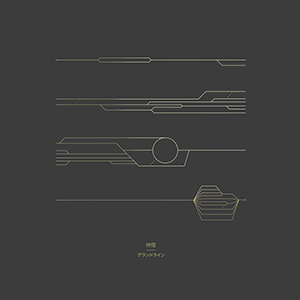 The quartet of Nakama (Adrian L√∏seth Waade on violin, Ayumi Tanaka on piano, Andreas Wildhagen playing drums, and Christian Meaas Svendsen providing double bass) expand upon their use of silence in juxtaposition with experimental jazz from their previous record, Before the Storm, into this newer, more conceptually structured work. The album is based upon Svendsen's structuring, which instructs the performers to improvise their playing reacting to a visual structure, giving the work an additional layer of complexity that makes the album all the more compelling.
The quartet of Nakama (Adrian L√∏seth Waade on violin, Ayumi Tanaka on piano, Andreas Wildhagen playing drums, and Christian Meaas Svendsen providing double bass) expand upon their use of silence in juxtaposition with experimental jazz from their previous record, Before the Storm, into this newer, more conceptually structured work. The album is based upon Svendsen's structuring, which instructs the performers to improvise their playing reacting to a visual structure, giving the work an additional layer of complexity that makes the album all the more compelling.
These seven pieces are all improvisations based on each performer’s "compositions" (what they actually play) as part of a larger "form" structure that determines when parts are played, or when they transition into a new composition.These sort of game-like rules are not necessarily new to jazz improvisations, but Nakama clearly put their own spin on things.I admit at times the conceptualism went over my head (and the included diagrams in the printed insert triggered some old geometry anxiety), but completely divorced from the concept, the music stands on its own.
Almost half of the album is taken up by the lengthy "Doremingo + Taiko" (using the "Grand Line" form included in the insert).Waade's restrained violin, Tanaka's building drama on piano, and Wildhagen’s buzzing cymbals build from its quiet opening rather quickly into a heavy roar.At times the piano takes the focus, making for a conventional beacon in an otherwise dissonant mix, while at other times, the drums and Svendsen’s double bass lock into steady, metronomic rhythms that soon fall apart.
Throughout its 28-minute duration, each player manages to take the focus via conventional sounding compositions, but also just as quickly slip away into abstract squeaks and scrapes, rattling drums or rumbling bass.It is an extremely dynamic work that playfully goes from structure into chaos, taking on an almost collage-like sound as the players jump from composition to composition, at times pausing to allow for a break, with the silence excellently underscoring the dissonance.
The next five pieces are substantially shorter in length and, not surprisingly do not demonstrate quite the drastic variances in structure that "Doremingo + Taiko" did.For "The Sun", violin and piano lead off right away to set a more melodic mood, as open space and understated performing keeps things a bit more peaceful.Conversely, "Nanika" is a mass of taut string plucks and shrill scrapes.Again, the four players keep a healthy use of silence there, but the overall sound is definitely on the experimental side.
The other lengthy piece, the closing "Daily Choices" (which uses the "Metro" form, my guess is some form of mass transit map), uses a somewhat different, though just as effective strategy for its 14 minutes.Rather than the chaotic mass of "Doremingo + Taiko", here there is an emphasis on repetition:recurring strings, simple but steady percussion, with the occasional unexpected bass string pluck or scraped string.The repetition seems to be signified in the "Daily Choices" title, but these bits of "glitch" in the routine at times leave the piece sounding like a malfunctioning computer, occasionally spitting out bits of music erratically, to make for a more fresh, and overall looser and more fun sounding composition.
Christian Meaas Svendsen's approach to structure and performance on Grand Line may be a rather complex and conceptual one, but by no means is being able to follow it integral to enjoying this record.There are times where the patterns being utilized are more obvious than others, but even without that in mind, Nakama have created a work that falls under the general heading of "free jazz" (though it is not as free as it may sound), but one that also embraces subtlety as much as chaos.
samples:
 
Read More

